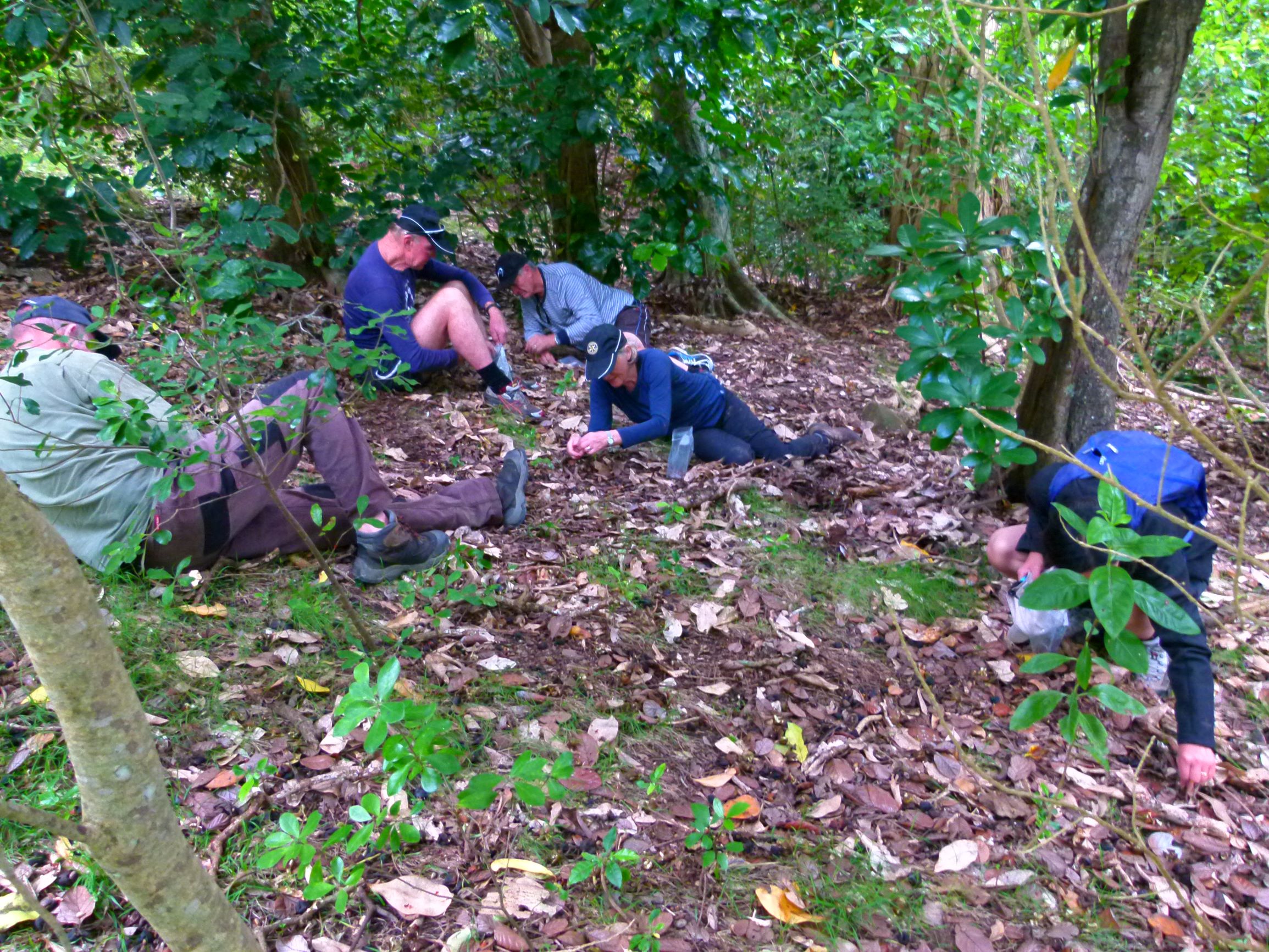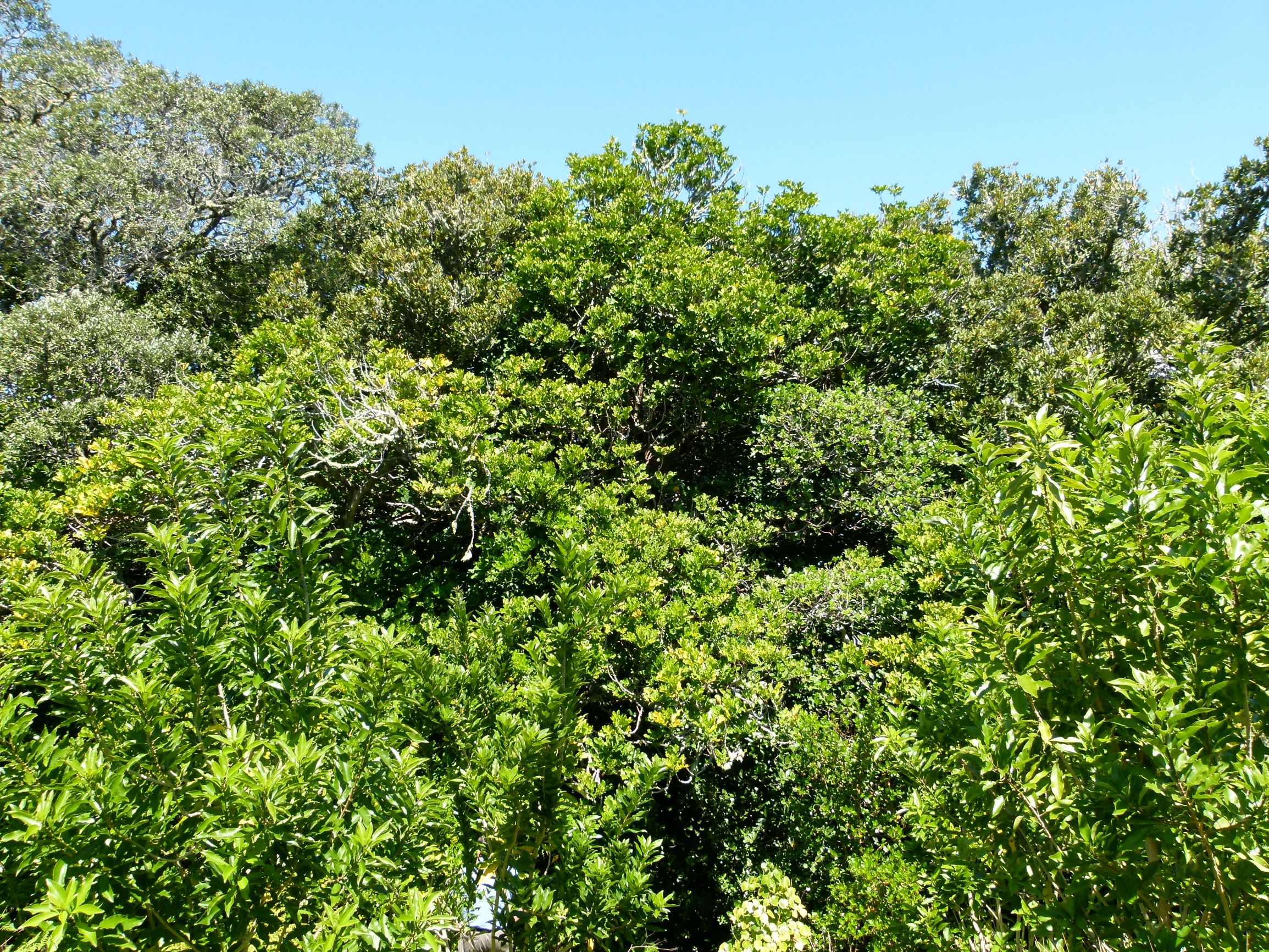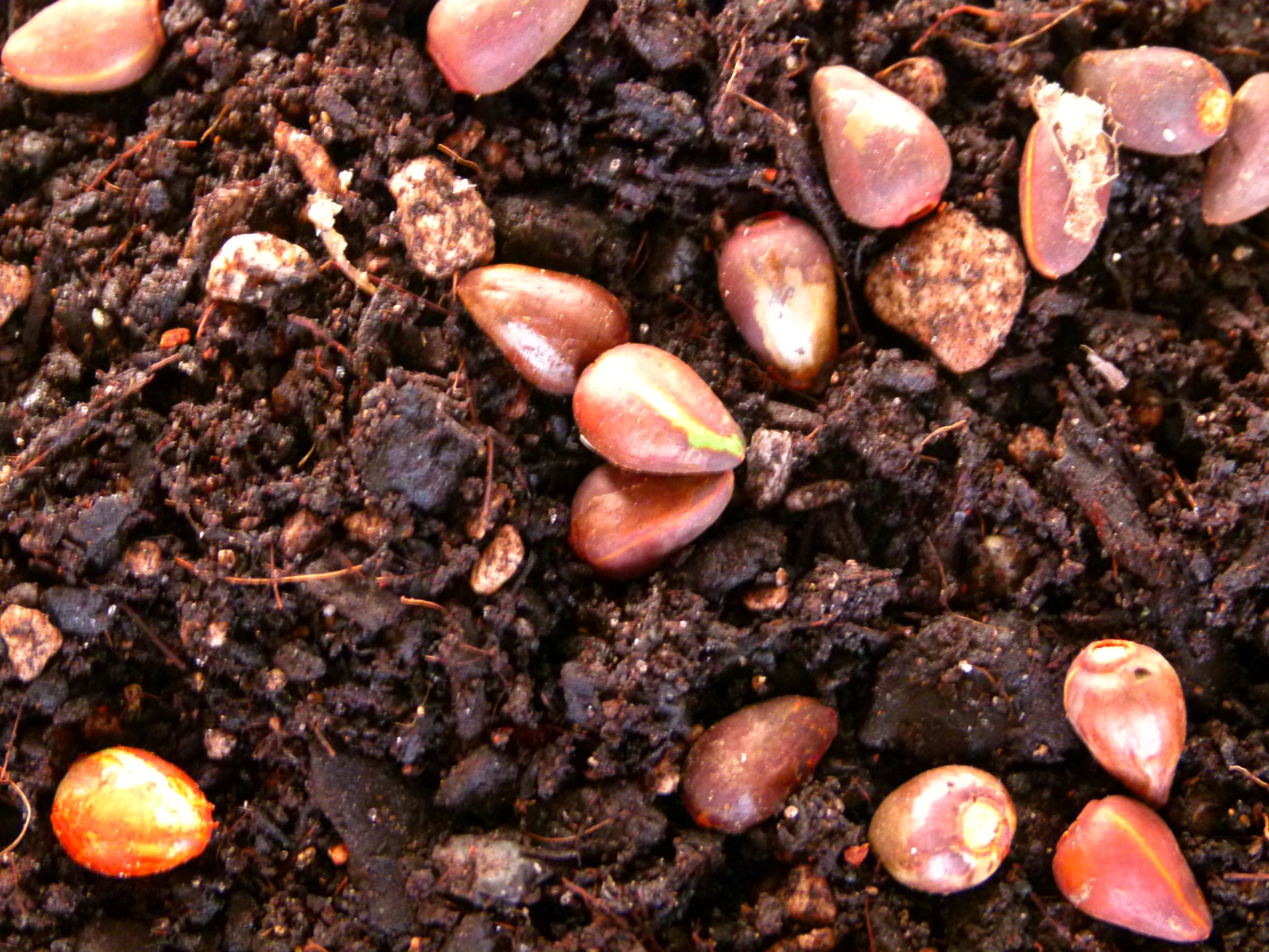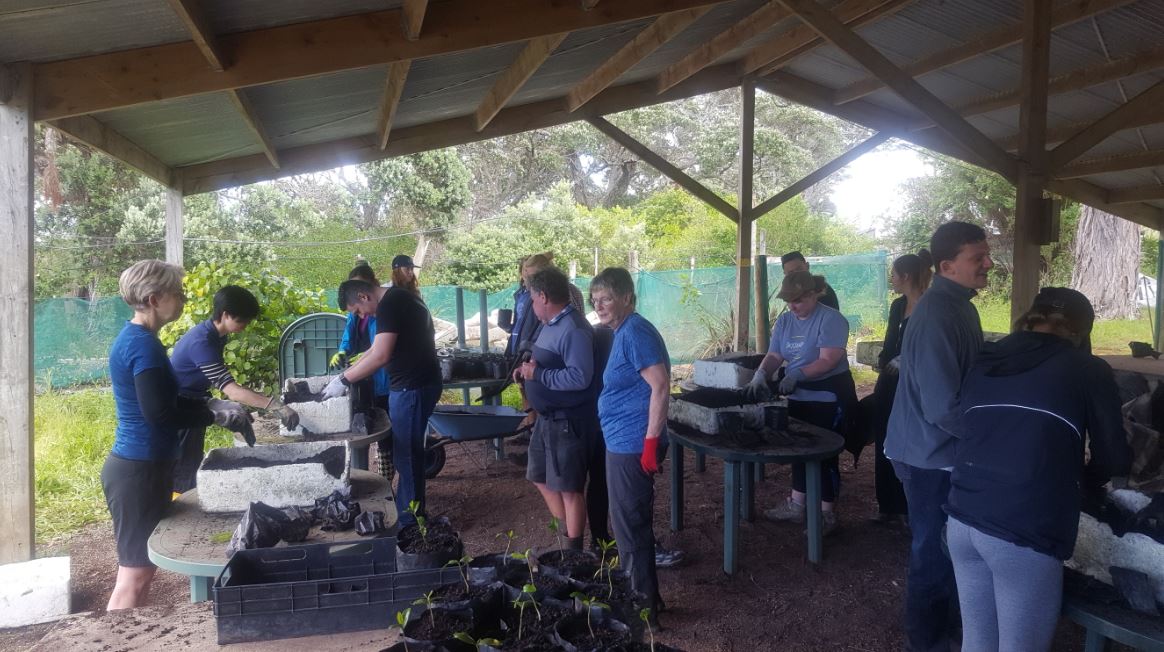Nursery & Planting
Motuihe Island / Te Motu-a-Ihenga
With a project such as Motuihe Restoration, there is a variety of volunteer work available. The island nursery has been a fundamental part of the project. As at 2024, over 453,000 plants have been seed sourced from the island, propagated in the nursery and planted out in what was farming pasture. Motuihe Island was originally 20% native bush, 80% pasture. The Trust’s Restoration Plan will reverse this to 80% native bush, 20% pasture. What a great project to be part of. It is extremely rewarding in being able to leave something tangible and a positive footprint for future generations of visitors to Motuihe Island.
How can you help?
The tasks below provide a great educational and conservation experience for the majority of age groups, whether it be corporate team building exercises, tertiary and school environmental studies or simply being outdoors and knowing your energies have transformed this island into a wonderful gem in the Hauraki Gulf. It assists in flora identification, habitat requirements and plant life cycles.


(Tawapou Seed Collection)
Seed Sourcing: The majority of seeds that are propagated by Motuihe Trust within the island nursery are eco-sourced from the island by keen volunteers of all ages. It is an easy task that allows enjoyment in peaceful surroundings and great for bird watching enthusiasts. Imagine collecting puriri seeds with Saddleback birdsong around you and the birds flying just overhead or the possibility of sighting our translocated geckos or skinks. Seeds are collected according to availability and ripeness. The majority are suitable for collecting February through to early June. Refer to About the Island\Biodiversity for more information on Seed Collection or Native Plant Identification.


(ripe Kohekohe seeds & mature Kohekohe)
Seed Sowing: After a quick briefing and demonstration from one of our Team Leaders, this is another easy task for any age groups. As the seeds mature at different times of the year, trays of native seeds are sown in the potting mix and stored in the nursery throughout the year.

Nursery Seedlings: Team Leaders will provide a quick demonstration on the correct procedure to transfer the tiny seedlings from seed trays into PBs (planting bags) thereby ensuring the plant has the best chance to grow a strong root structure. An irrigation system in the nursery ensures the plants have sufficient moisture to survive through the summer season and be ready for planting the following winter. Depending on the vulnerability of the seedlings, netting placed over the particular area may be necessary to keep pukekos away.
Weeding of the seedlings in the nursery during all seasons is a continuous and satisfying task. This ensures the seedling absorbs the fertiliser within the potting mix.

Planting: The planting season commences around April depending on soil moisture and goes through to approximately September. Groups and individuals of most ages are encouraged to assist in this if physical fitness allows. The Project is currently in infill planting mode with canopy tree species.


